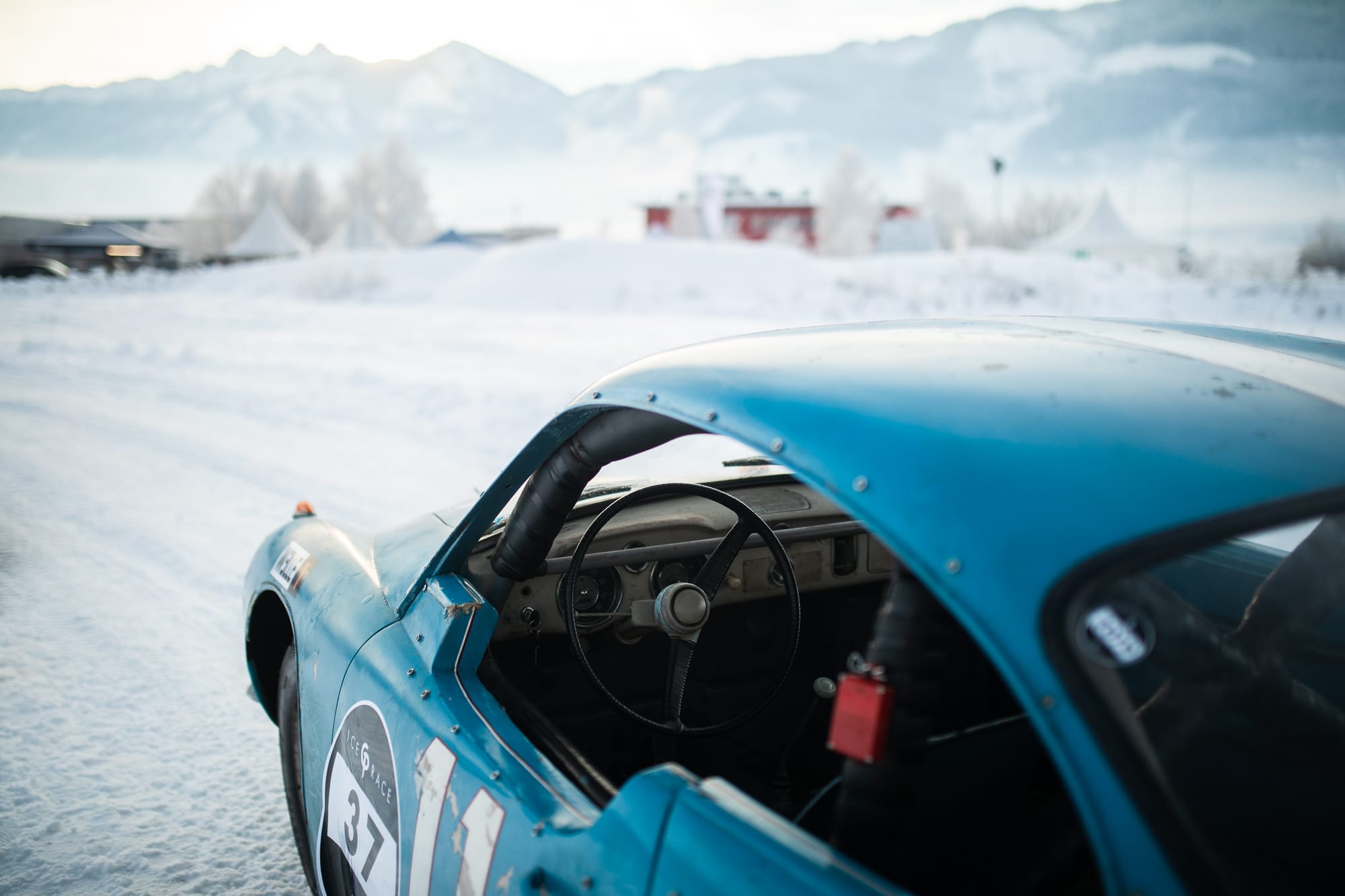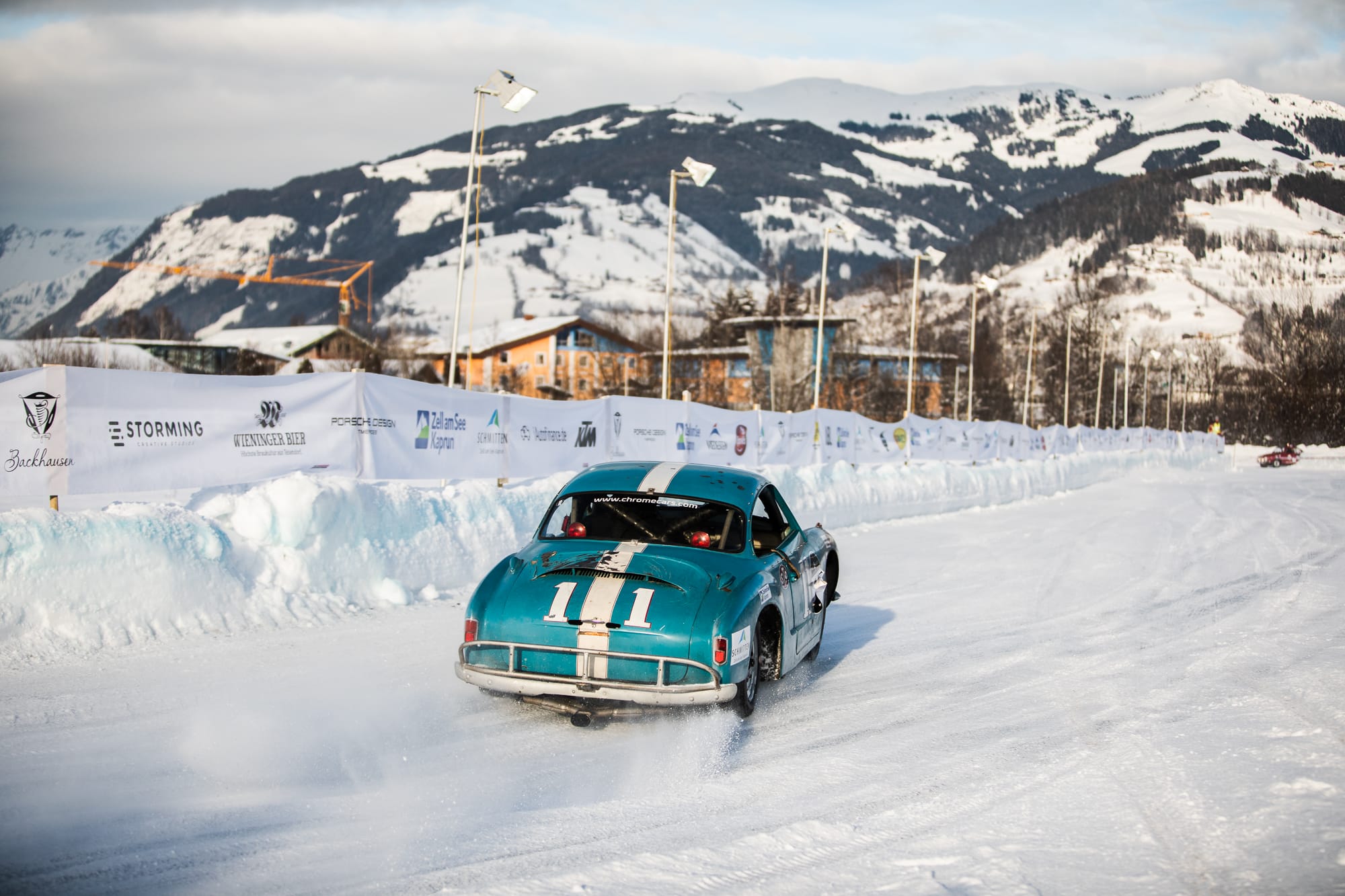Karmann Ghia Super 90
- Very Early Karmann Ghia
- Extensive Race history
- Period Speed Tuning
Winning Bid: 44.750,00€
Description
Specs
Bids
Buyer's Premium
Comments
The birth certificate of VW states that the Karmann Ghia #11 left the production plant in Osnabrück shortly before Christmas and was shipped to America on January 3rd 1957. It was delivered in the L330 Trout Blue with dark blue over grey interior. So this is a very early Karmann Ghia “Lowlight”.
The owner at that time, Dr. Rudolf Schleuterman, decided relatively soon to use and convert the elegant coupe for race/rally and Icerace applications. The car was able to win several trophies. In 1961 the “Foreign Car Guide Magazine” reported about the “3 hour Naomi Lake Grand Prix of endurance” with reference to Schleutermann’s small racer with Porsche Super 90 engine. From 1957 on, the car was gradually converted into a competitive racing car.
The Ghia was completely stripped, the 30 hp engine was replaced with an original Porsche Super 90 engine. In order to slow down the propulsion, Porsche 356 B brakes were installed in the front and the rear axle was upgraded with a Camper Compensator from the Porsche Carrera for stability in curves. The oil temperature of the aggregate is transmitted via a Porsche remote temperature display. The rear shock absorbers were replaced by hydraulically adjustable dampers. The interior was cleared out except for a bucket seat for the driver and equipped with an all-round roll cage. The original 4-inch rims were replaced with 4.5-inch south wheel rims. The side windows were removed and the driver’s door was fixed to avoid opening during hard cornering. Instead of the original window panes, plastic panes were made which are fixed to the body with snap fasteners. These are probably the most important modifications of that time.
The Ghia probably had its last race in 1969 and was then parked.
 Eventually, the car ended up in the collection of the famous collector of special cars Myron Vernis in America. From there it came to Europe in 2008 and finally to me.
Eventually, the car ended up in the collection of the famous collector of special cars Myron Vernis in America. From there it came to Europe in 2008 and finally to me.
When the car came to me it was still in the same condition as it was parked in 1969. Since the engine had been standing for so long I had it overhauled. The brake system is completely overhauled and the rear axle is rebuilt to bigger drums from the bus. I had the tank replaced because it was too rusty, and all fuel lines are new. The fuel pump was also renewed because the old one had no more function. The electrical system has been reworked. The alternator was overhauled.
At the body, there are some updates in the rear to improve the air supply. The driver’s door has a cutout, not to let the arm hang out better (that was my first guess) but to get in better with the low roofline. Rear fenders are cut out to not loose time when changing tires. At the front, he probably had some bumps. So the air intakes were closed at some point. Fortunately, he didn’t get a newer front of the later model, as usual.
The floor plate was partly replaced by other plates under the driver’s seat. I suppose because of weight reduction ;)
The car participated very successfully in the GPIceRace last year. It was a favourite of the audience and photographers. It was invited to take part in the demo run with the Porsche museum cars.
In the competition, it was the fastest classic car and only beaten in 8th place by Lancia Delta Integrales, Mitsubishi Evolutions and Porsche GT3.
To get the full performance potential of the engine I would change the carburettors. The original Solex PII 4 are outdated but I think they have reached their life cycle. Probably I would also change the distributor. It seems to me that it does not work 100% as it should.
Total Bids Placed:
Auction has expired
Highest bidder was: GYC
| Bidder Name | Bidding Time | Bid | Auto |
|---|---|---|---|
| GYC | 29. November 2020 19:41 | 44.750,00€ | |
| Auction started | 29. November 2020 19:29 | ||
Buyer's Premium
| Buyer's Premium | 9.6% of Winning bid. |
|---|


















 Eventually, the car ended up in the collection of the famous collector of special cars Myron Vernis in America. From there it came to Europe in 2008 and finally to me.
Eventually, the car ended up in the collection of the famous collector of special cars Myron Vernis in America. From there it came to Europe in 2008 and finally to me.
